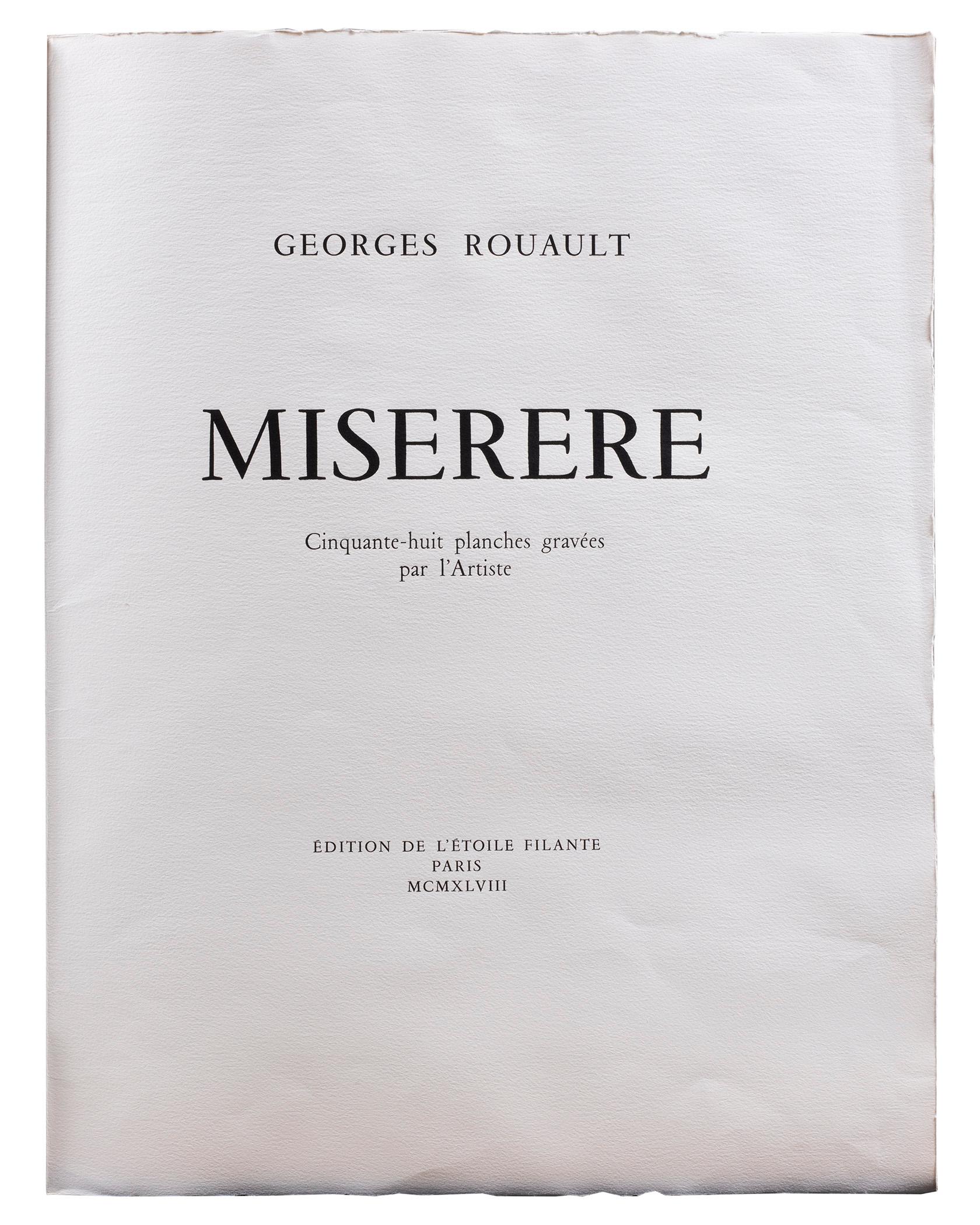Miserere
Artist: Georges Rouault (French, 1871-1958)
Publisher: Éditions de l'Étoile filante, Paris, 1948
Printer: etchings: Jacquemin, Paris
text: Aulard, Paris
Author: Georges Rouault (French, 1871-1958)
Date: 1916-1927, published 1948
Dimensions:
portfolio: 27 5/8 x 21 1/2 x 4 1/8 in. (702 x 546 x 105mm)
page (untrimmed): 26 3/4 x 20 1/4 in. (679 x 514mm)
sheet: 25 3/4 x 19 3/4 in. (654 x 501mm)
Medium: Original prints: 58 etchings with aquatint, drypoint, roulette and photogravure (see notes)
Text: letterpress
Paper: Arches cream laid paper, watermarked
Box-Vellum, rust colored fabric
Two part bronze Clasp
Classification: Prints
Credit Line: Mrs. George W. Stevens Fund
Object number: 1983.44A-MMM
Label Text:French artist Georges Rouault’s Miserere (Latin for “have mercy”) is a profound, expressive meditation on suffering and the promise of redemption. Created in 1922–27 (though not published until 1948), it remains one of the 20th century’s seminal print portfolios and Rouault’s most ambitious graphic project. Across his cycle of 58 monumental prints, a selection of which is displayed in this gallery, Rouault powerfully conveys his deep empathy for humanity in response to the destruction and misery he witnessed during World War I (1914–1918). Masterfully combining many intaglio (incised into metal) printmaking methods, he pushed the medium’s technical boundaries to achieve expressive tonalities and painterly effects that evoke the thick contour lines and luminous qualities of Medieval stained glass.
Divided into two sections, Miserere (Have Mercy) and Guerre (War), Rouault’s series intertwines socially conscious depictions of poor and marginalized people, with whom he identified, biting commentary on the pompous middle class and government officials, and images of Jesus’ crucifixion, meant to provide spiritual reassurance to the afflicted. Rouault turned to his spirituality and the promise of salvation central to Christianity as an antidote to the despair of poverty and the terrors of modern war that surrounded him. Developing multiple layers of meaning, Rouault used poetic, insightful titles derived from several sources, including Classical texts, the Bible, and his own writings, to accompany this compelling imagery and encourage deeper contemplation.
Rouault’s potent imagery, achieved through his complex understanding of printmaking’s possibilities and his own deep spirituality, endures as a timeless expression of hope and compassion amid human suffering and despair.
Divided into two sections, Miserere (Have Mercy) and Guerre (War), Rouault’s series intertwines socially conscious depictions of poor and marginalized people, with whom he identified, biting commentary on the pompous middle class and government officials, and images of Jesus’ crucifixion, meant to provide spiritual reassurance to the afflicted. Rouault turned to his spirituality and the promise of salvation central to Christianity as an antidote to the despair of poverty and the terrors of modern war that surrounded him. Developing multiple layers of meaning, Rouault used poetic, insightful titles derived from several sources, including Classical texts, the Bible, and his own writings, to accompany this compelling imagery and encourage deeper contemplation.
Rouault’s potent imagery, achieved through his complex understanding of printmaking’s possibilities and his own deep spirituality, endures as a timeless expression of hope and compassion amid human suffering and despair.
Not on view
In Collection(s)






































